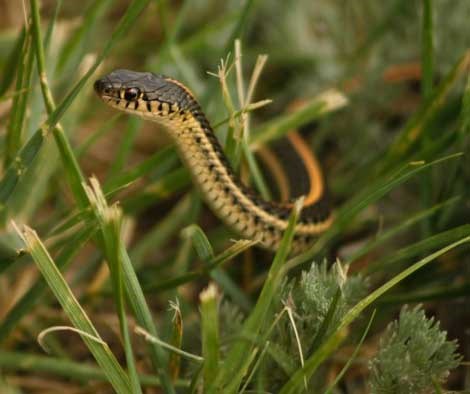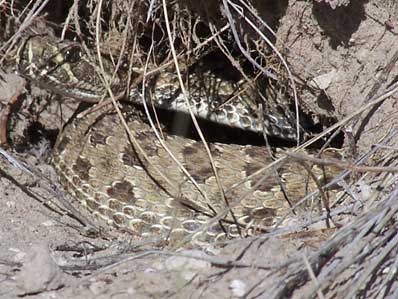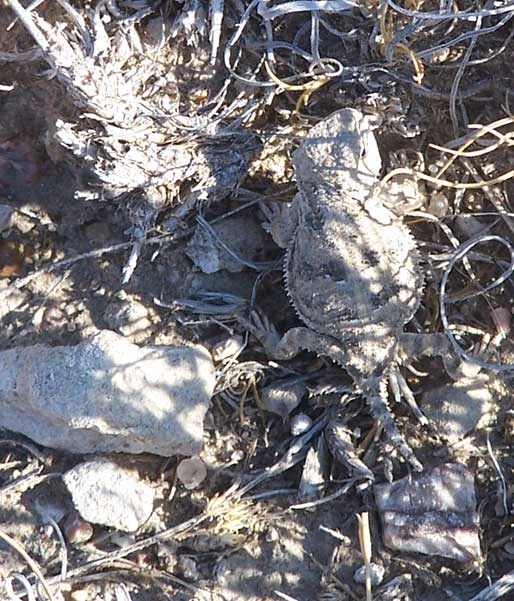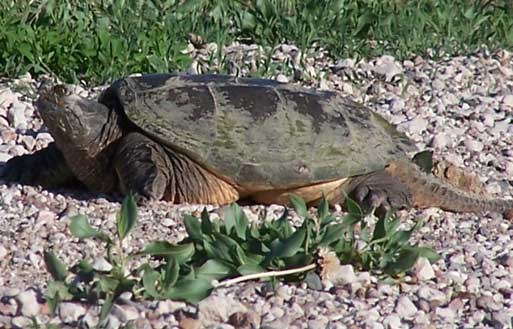
NPS Photo 
NPS Photo There is a wide variety of snakes at Agate, including at least 12 documented species. Most commonly sighted are the bullsnake, prairie rattler, hognose and garter snake. Snakes are distinguished by their elongated body, lack of appendages (arms and legs), and they have no external ear opening. All snakes at Agate are shy, and do not generally approach people or pets, preferring to hide and wait for danger to pass. Rattlesnakes rattle their tail as a warning that they are there and do not want to be disturbed. If a visitor does encounter a rattlesnake, or a snake they cannot identify, wait for it to pass, or slowly walk away from it and let a ranger know. To protect the rattlesnakes and visitors, park staff move them away from the trails and Visitor Center to less traveled areas of the park. 
NPS Photo 
NPS Photo From the big snapping turtles to the colorful painted turtle, turtles are fun to see and watch. There are three species of turtles documented at Agate, snapping, painted and spiny soft-shell, which is not commonly seen. Visitors who patiently watch might see a snapping turtle that weighs up to 45 pounds with a shell measuring 18 inches long. Even the smaller snappers are easily identified by their hooked jaws, massive heads, long tails and darkly colored shells. Snappers feed on invertebrates, aquatic plants, carrion, birds, small mammals and fish. Though they are excellent swimmers and spend most of their time in the water or buried in mud, they can travel overland several miles at a time. The painted turtles are smaller, ranging from 4"-10" and are identified by their colors. Their shell is olive to black with the segments of the shell lined with red; neck, legs and tail are striped with red and yellow. Painted turtles spend most of their time in the water, or very close to it, and enjoy basking on partially submerged logs and debris. Young painteds have a carnivorous diet, meaning they eat mostly meat, but grow to prefer a herbaceous diet of aquatic plants and reeds after a few years. |
Last updated: May 12, 2024
